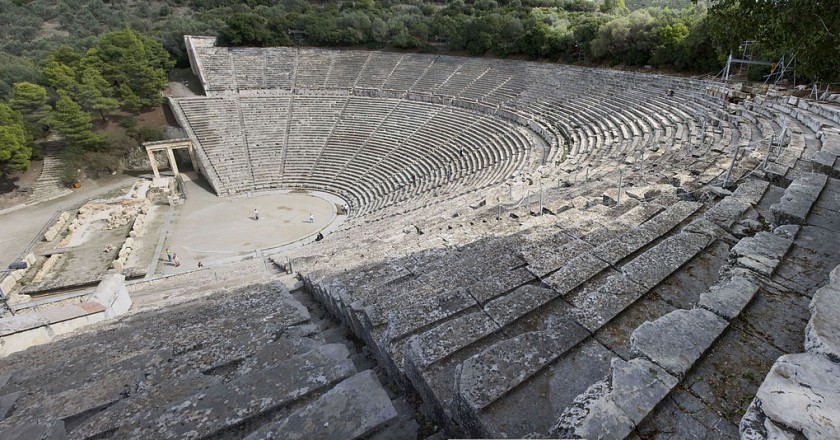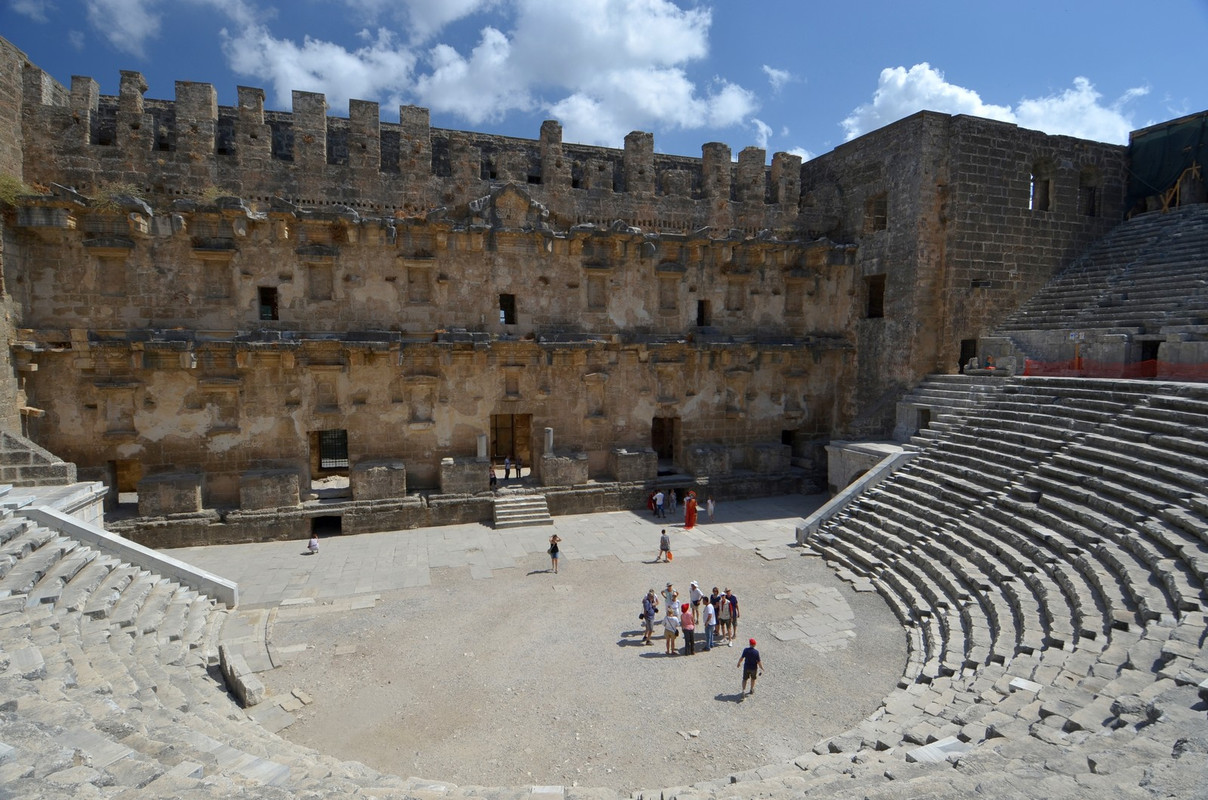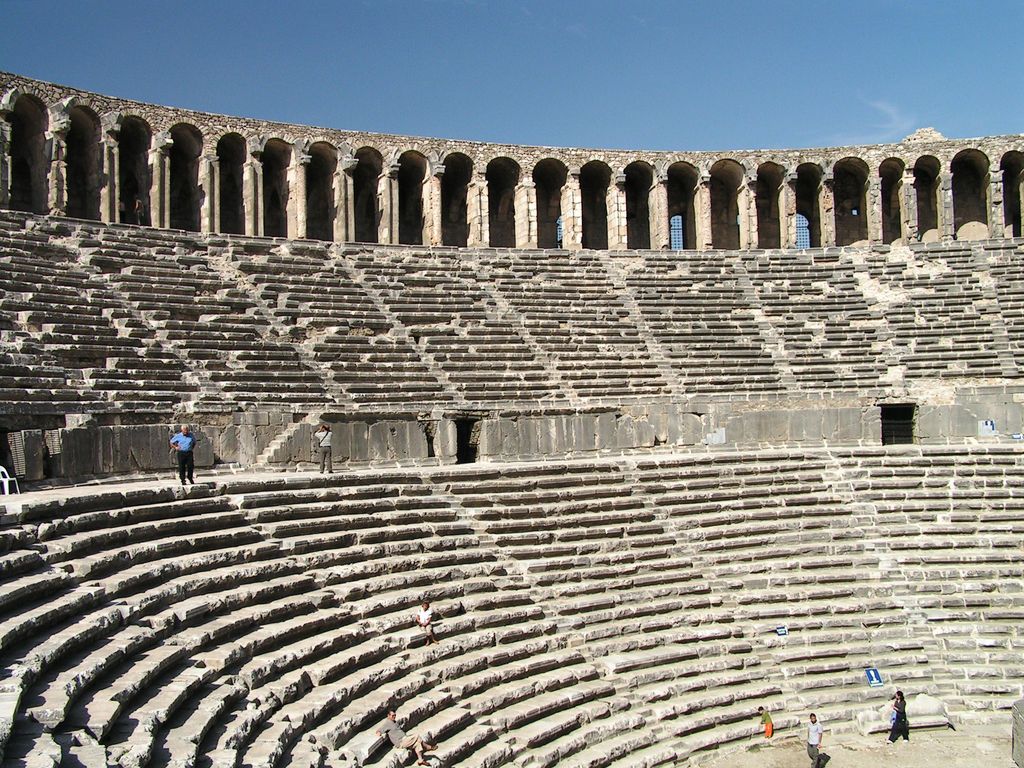How Architecture Works With Sound Filter
Architecture tin can exist mostly perceived visually, but it is necessary to talk about the auditory perception of compages and how information technology is reflected in structures in the past.
"I call architecture frozen music." – Johann Wolfgang von Goethe
Get-go of all, simply close your eyes to better hear the architecture. This will be much more than effective, especially if yous are in an curvation with behemothic mass-begetting columns. Moving around by listening to the sounds reflected from the structures leads to the strengthening of the auditory perception and an effective communication with the structure.The type of material used in any structure is very important for acoustics. Considering materials that reflect or blot the sound play an of import role in the acoustics of the space. While the sound of a marble or ceramic is easily heard, heavy fabric or thick carpets cause dead spaces because of being absorb sound.
In history, information technology is possible to say that the acoustics of places change with the developing applied science. However, the open-air theaters where the sound is reflected in its purest form have been widely used in ancient times. Many examples of these theaters, peculiarly those built and used during the Hellenistic and Roman periods, can still be seen and experienced today.In the antiquity, architects were interested in the structure of the country, the gradient and diameter of the rows of seats, the spread of audio in the theater and the studies to brand the sound heard in the same clarity all over the theater to provides acoustics in theater. They accept washed a lot of inquiry and works related to all of these problems and they have created high level jobs with limited opportunities.
Beginning of all, the land in which the theater was to be synthetic had to be acoustically appropriate. The land should not accept four characteristics defined by Vitruvius: Dissonant (disturbing reflection from higher up),circumsonant (focusing), resonant(echo), consonant (supporting reflection from below). A suitable land was called where the audio waves would spread without reverberation.Another important factor relates to the rows of seats. The semi-circular concentric rings of the seats would reflect the sound back directly into the center of the orchestral circle, but as the seats were inclined vertically to the mount skirts, the reflections would go to the air. In any case, the seats would serve as a good sound absorber.

Epidaurus Theatre, Hellenic republic.

Epidaurus Theatre, Greece.
For case, the rows of limestone seats in Epidaurus creates an constructive acoustic filter that collects low-frequency groundwork sounds and reflects the high-frequency sounds of the performers on the stage, and carries an player'southward voice to the back rows of the theater. Acoustic properties have not been taken into consideration in the option of building materials (limestone, marble, etc.) to be selected for the construction of the theater. However, we can say that these materials used in different parts of the theater affect acoustics.

Skene building are also known to be used for acoustically positive results. Aspendos, Turkey.

Aspendos, Turkey.
Every bit the slopes were not e'er suitable, the Romans often tilted their seats on a series of barrel-vault. The most preserved example is the Aspendos, built by Zenon, son of Theodorus. Additionally, Velum, which protects people from the sun by closing the theater, is idea to have acoustically benefited by preventing the echoing of the sound. The fact that the Roman theater plan was more closed than the Hellenistic theater, allowed the acoustic parameters to achieve a more than advanced level in these theaters.
Every bit a result, many factors need to come together for the acoustics of spaces to be qualified. In ancient times, the structure of the land, the building material used, the development of the rows of seats, the awnings that helped to improve the acoustics were very important in this respect. Over time, we can say that acoustics have evolved for diverse reasons. I'g going to wait into information technology in side by side commodity.
How Architecture Works With Sound Filter,
Source: https://illustrarch.com/articles/1455-the-sound-of-architecture-ancient-times.html
Posted by: shermanbaces1946.blogspot.com


0 Response to "How Architecture Works With Sound Filter"
Post a Comment